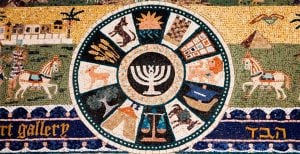Also known as Chag La’Ilanot (Festival for Trees), Tu B’Shvat is a holiday like no other! While most Jewish holidays are accompanied by restrictive laws or stories of the Jewish people’s almost-destruction, Tu B’Shvat exists simply to mark the passing of time.
The Talmud states that there are four ‘New Years’ within the Jewish year: Rosh Hashana (New Year for people and vegetable tithes), the first of Nissan (beginning of the calendar and new year for kings), the first of Elul (used to mark animal tithes) and the 15th Shvat – the new year for trees. Traditionally, fruits could only be eaten from trees of a certain age; Tu B’Shvat was how famers counted their trees’ ages. Today, we use Tu B’Shvat as an opportunity to celebrate our natural world and the abundance of fruits trees give us! Here’s how:
• Eating 15 Fruits Tu B’Shvat literally means the 15th of the Hebrew month of Shvat, the date on which this holiday falls. One widespread custom is eating 15 different fruits: fresh or dried, beautiful trays of perfectly ripe, generously displayed fruits are a Tu B’Shvat must have! Many people try to make sure this includes fruits from the 7 Species native to Israel – pomegranates, figs, olives, dates and figs. It’s also customary to eat a fruit that’s just come into season, as there is a special beracha (blessing) that is said over the new season’s produce.
• Holding a Tu B’Shvat Seder One of the lesser-known Tu B’Shvat customs is holding a Seder, like at Pesach – just without the songs about plagues and goats! Four cups of wine are drunk, but here they represent the changing seasons and natural abundance in the world around us. The first is all white; the second mostly white with a splash of red; the third mostly red and the fourth completely red. When possible, it is obviously better to use Israeli wines! Many people have a special meal with family and friends as part of their Seder – stay tuned for recipes!
• Planting Trees Tu B’Shvat is Israel’s Arbor Day – thousands of schoolchildren are taken to national parks and forest to plant trees. The Jewish National Fund helps out-of-Israel communities send donations for planting, and many Jewish communities plant saplings in communal gardens to mark the day.
• Environmental Awareness Projects Tu B’Shvat is a celebration of trees and nature. Every year, Jewish schools across the world use this time to teach kids about the importance of safeguarding our environment, and treating the world around us with respect.
It may be a minor festival, but when used to teach about conserving our world or celebrate with friends, Tu B’Shvat can have a big impact!






